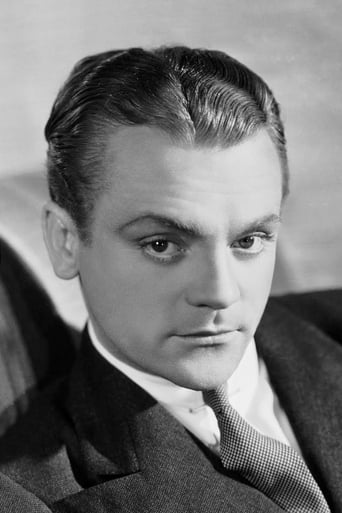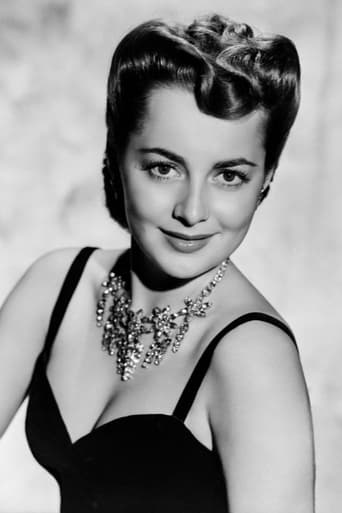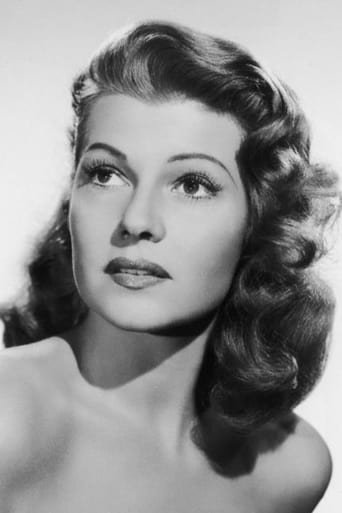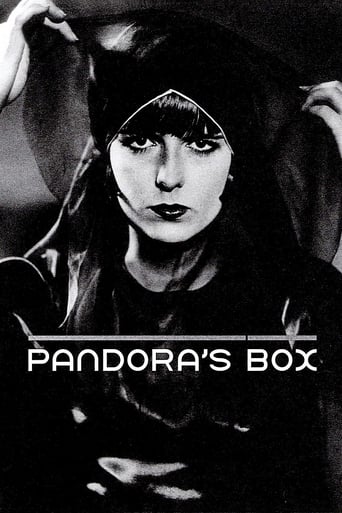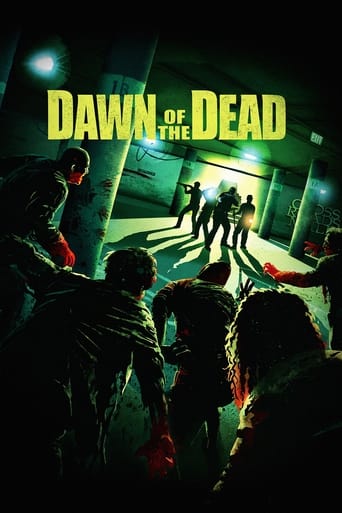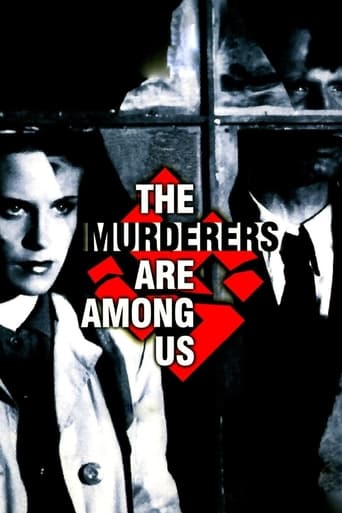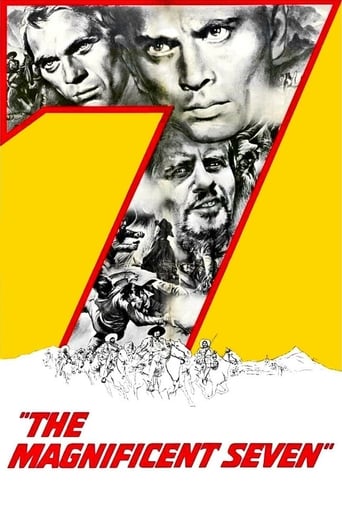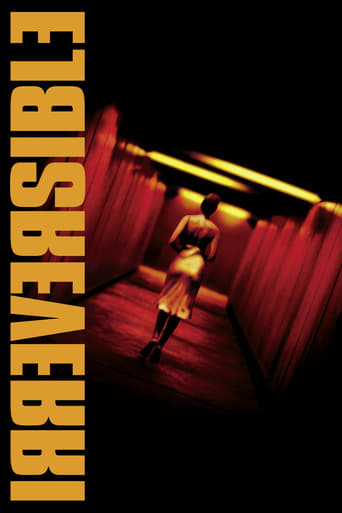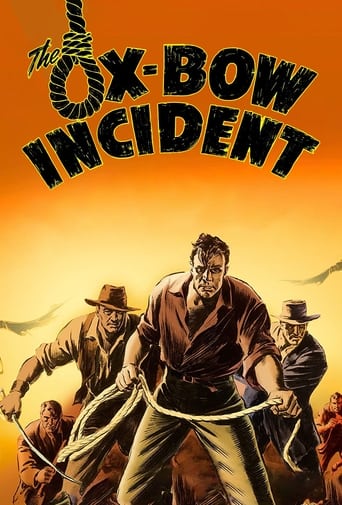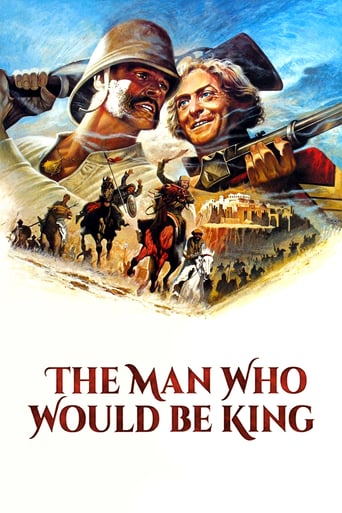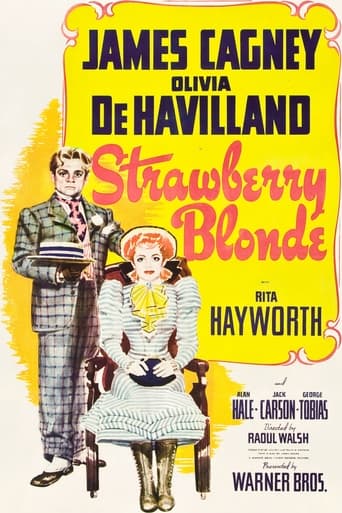
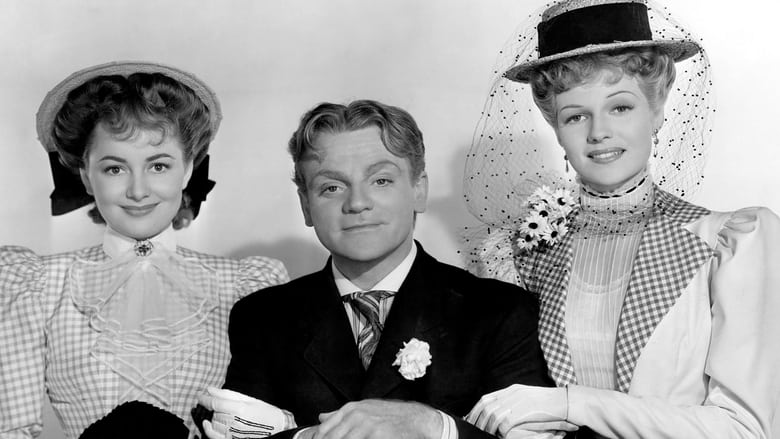
The Strawberry Blonde (1941)
Biff Grimes is desperately in love with Virginia, but his best friend Hugo marries her and manipulates Biff into becoming involved in his somewhat nefarious businesses. Hugo appears to have stolen Biff's dreams, and Biff has to deal with the realisation that having what he wants and wanting what another has can be very different things.
Watch Trailer
Cast
Similar titles
Reviews
Very well executed
Very Cool!!!
The joyful confection is coated in a sparkly gloss, bright enough to gleam from the darkest, most cynical corners.
Great story, amazing characters, superb action, enthralling cinematography. Yes, this is something I am glad I spent money on.
"The Strawberry Blonde" is another film that showed what kind of an actor James Cagney is when given a different film to make. The film is based upon a successful play and was remade several years later with Gary Cooper. This "Warner Bros" film has a period setting, it is based during the 1890s. The sets, the costumes, the lighting, they all contribute to a great film. There is a well balanced combination of humour and of drama. Raoul Walsh's direction is very good as he was the right choice for this kind of film at "Warner Bros." The director knew how to produce the right performances from the main cast and they are outstanding. Originally, Ann Sheridan was supposed to be cast as the blonde in question but she had been suspended by Jack Warner. "M.G.M" loaned Rita Hayworth for this film instead. The plot unfolds via a flashback. This is initiated when Cagney learns that his old nemesis - played by Jack Carson - is on his way to Cagney's dental surgery with toothache. Then Cagney thinks back to all that has happened and the film begins properly. Olivia De Havilland plays Cagney's wife and the latter character has to decide whether he married the right woman or not. Alan Hale has some great scenes with James Cagney as his father, including a rather touching final scene. Olivia De Havilland surpassed herself in this film and was a great leading lady for James Cagney. Her performance is amongst the best of her career. Jack Carson scores as the devious and thoroughly dishonest chiseler. Rita Hayworth is good but I haven't seen any other of her films so I can't honestly say how good a performer she is. This is a masterpiece of drama and light comedy.
"The Strawberry Blonde" is a comedy-romance that takes place in the Gay Nineties, which for most of the American population weren't all that carefree and happy. But this film, and the James Hagan play it was based on, focus more on the daily lives of city dwellers and the mores of that time. The Epstein brothers (Julius and Philip) wrote the screenplay for this 1941 film, no doubt explicitly to fit James Cagney's persona.The title is from a line in the 1895 popular tune, "The Band Played On," by John F. Palmer (lyrics) and Charles B. Ward (music). And the song is a constant prop or background for the movie. We see and hear it sung by a barbershop quartet, played by a marching band, and played by an orchestra at a dance. It takes on an almost haunting presence as we hear it in the background coming from a radio, or from a street band outdoors, or in the park. Indeed, it is inextricably woven into plot.It is a catchy tune and it serves nicely as a thread that ties together the lives of its four main characters. They are Biff Grimes (James Cagney), Amy Lind (Olivia de Havilland), Virginia Brush (Rita Hayworth), and Hugo Barnstead (Jack Carson). A fine supporting cast includes George Tobias, Alan Hale, Una O'Connor, and George Reeves. All performances are excellent.Other reviewers have noted the off-character nature of Cagney's role. Unlike his hard-bitten persona of the crime and gangster movies that made him a star, here Cagney shows a softer side, albeit still brash and rough around the edges. But he's also more real and takes as many punches and defeats as he hands out.Olivia de Havilland has a role in which we can see the diverse range and abilities of this fine actress. She is one of the greatest actresses in emoting with her face – her eyes, mouth and facial expressions. One of the funniest scenes in this film is in the park when Amy feigns a modern attitude with Biff. She winks, gives the look and strikes a rebellious pose – all of this to do about women coming out and kissing a man, smoking cigarettes, etc. Biff is shocked and shows it. I'm chuckling now as I write this with the scene in my mind.Later, after some things have changed, Biff tosses caution to the wind and says he is ready to live such a loose life with her, and Amy is shocked and frightened. They talk it out, and we just enjoy the comedy of how difficult courting must have been when people were proper and decent in the Gay Nineties.Rita Hayworth is the strawberry blonde, Virginia Brush. She is all sweetness, but underneath that façade is a woman whom probably no man will be able to satisfy. Especially Jack Carson as Hugo Barnstead who thinks he was won the prize by marrying her. Hugo epitomizes a type of character that seemed to flourish for a time in Eastern America – the guy who got rich feeding at the public trough and bilking the public in the process. But, he has taken care that he won't pay for his crimes, and Biff becomes his scapegoat. Carson was an excellent actor and had some fine bigger than life supporting roles in his career. This is one of them.The happy ending in all of this is when Biff and Amy marry after he spends a few years in prison for Hugo's graft. He has studied to become a dentist and has set up a practice in his home. He has a chance to get even when Hugo comes to have a tooth pulled, not knowing that Biff is the dentist. After inflicting the usual pain of pulling a tooth without gas, Biff sees that Hugo and Virginia are miserable together. He and Amy were the right match all along, and their happiness was genuine, based on love.This is an entertaining film in which some fine performers display their diverse talents. And, we get a humorous look at a time past with a nostalgic – if not completely accurate, portrayal of the society and mores of that age.
"Strawberry Blonde" has tremendous energy. It's a love letter to fin-de - siecle America, here a feisty, urban "melting pot" of the burgeoning middle-classes. This is a Horatio Alger America, a place rife with go- getters and plenty of opportunity, where immigrants from different nations (Irish and Greek) strive arm in arm. James Cagney, Olivia DeHavilland and Rita Hayworth give delicious, youthful performances in "Strawberry Blonde". Perhaps a bit too old for their respective roles, the actors nevertheless conjure the bold charm of a younger America. An avaricious coquette, an ambitious scrapper and a sensitive would-be suffragette, these are characters with big, bright expectations. And they are perfectly suited to the lively, bustling world director Raoul Walsh presents here. Walsh gives us a kind of turn-of-the-century paradise, a world of graceful hats and high necked-dresses, foamy beer and bright brass bands, horse drawn carriages, friendly policemen and dinner at Tony Pastor's. It's a world that's clean and optimistic, but not yet fully tame. Cagney's Biff Grimes has a temper. At the merest wisp of provocation, he puts up his dukes. But his fisticuffs don't count as brutality here, instead they are rough play, a manifestation of energy and virility and will. "Strawberry Blonde" may venerate traditional values, but it also celebrates desire and appetite and possibility. It's an appealing vision. And probably a perfect inspirational vehicle for its original WWII audiences. "Strawberry Blonde" works as both a paean to a spirited, self-sacrificing working class AND a promise of satisfactions to come.
A lovely film with perfect performances from all four leads. Cagney is at his braggart best in the early going changing and maturing in a real, believable way. Olivia saucy and a bit bold but with a tenderness underneath, one of her best early performances. They share an immensely moving scene in the later part of the film, some of the best acting either ever did. Jack Carson with his oily glad handing charm is a marvelous fit for the mercenary, boorish, contemptible and rather stupid Hugo. But the one who benefited most from this film was Rita Hayworth. She had been slowly working her way up the ladder to this point but taking over the role when Ann Sheridan got into a dispute with her Warner bosses she took it between her teeth and ran with it all the way to A list stardom. Beautiful and flighty and every mans fantasy she is sublime in her single minded pursuit of wealth and position. Witty and wry and looking sensational in the period clothing she also skillfully shows her character's gradual change from coquettish young filly to dissatisfied, hardened shrew. Walsh sets a sprightly tone to the film and moves it forward at an assured pace helped greatly by several members of the Warner stock company especially Alan Hale and George Tobias. Not as well known as it should be this is classic cinema from Hollywood's Golden age.
